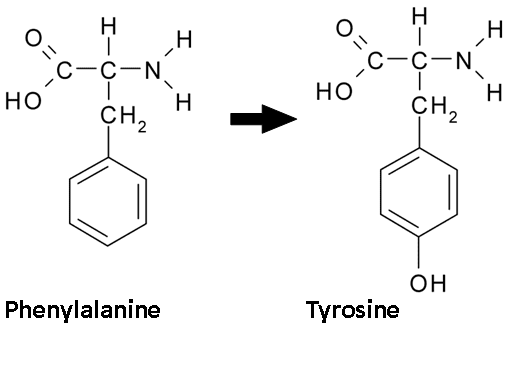Team:Imperial College London/PAH
From 2009.igem.org
(→Phenylalanine Hydroxylase Model) |
(→Phenylalanine Hydroxylase Detail) |
||
| Line 6: | Line 6: | ||
Since PAH is usually found in the liver, it unsurprisingly lacks any natural resistance to proteases found in the intestine. In order to overcome this problem we introduced a mutation into the structure of PAH to increase its resistance to proteolytic degradation. The delivery of PAH by The Encapsulator is particularly relevant on two accounts. Firstly, it represents a landmark in metabolic subcontraction and secondly, it offers a treatment for a genetic disease. | Since PAH is usually found in the liver, it unsurprisingly lacks any natural resistance to proteases found in the intestine. In order to overcome this problem we introduced a mutation into the structure of PAH to increase its resistance to proteolytic degradation. The delivery of PAH by The Encapsulator is particularly relevant on two accounts. Firstly, it represents a landmark in metabolic subcontraction and secondly, it offers a treatment for a genetic disease. | ||
| - | + | <br><br> | |
| - | + | We have also modified the PAH sequence on two accounts, in order to remove restriction enzyme recognition sites that would otherwise not allow for the biobricking of the enzyme. | |
| - | + | ||
| - | + | ||
| - | <br> | + | |
| - | + | ||
{{Imperial/09/TemplateBottom}} | {{Imperial/09/TemplateBottom}} | ||
Revision as of 13:26, 12 October 2009

Phenylalanine Hydroxylase Detail
Phenylalanine Hydroxylase is an enzyme that catalyses the converstion of phenylalanine to tyrosine. This is conversion is by the addition of a hydroxyl group to the end of the 6-carbon ring of phenylalanine, to form tyrosine.
Since PAH is usually found in the liver, it unsurprisingly lacks any natural resistance to proteases found in the intestine. In order to overcome this problem we introduced a mutation into the structure of PAH to increase its resistance to proteolytic degradation. The delivery of PAH by The Encapsulator is particularly relevant on two accounts. Firstly, it represents a landmark in metabolic subcontraction and secondly, it offers a treatment for a genetic disease.
We have also modified the PAH sequence on two accounts, in order to remove restriction enzyme recognition sites that would otherwise not allow for the biobricking of the enzyme.
 "
"




